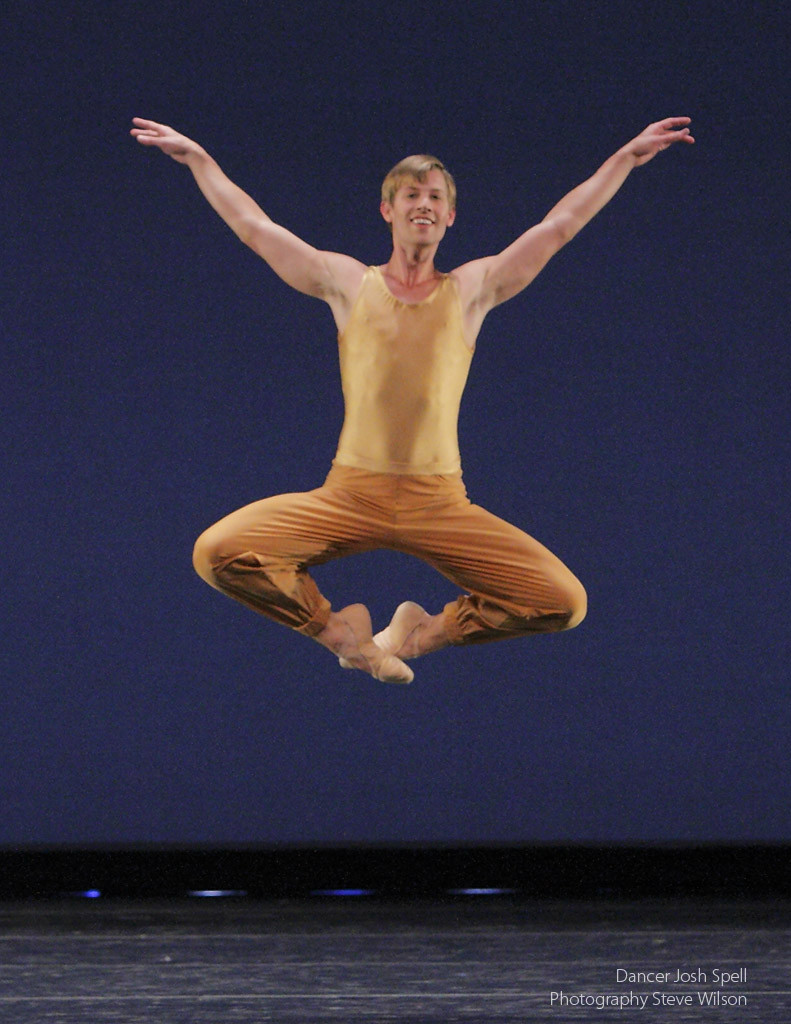Dance, dance, dance – it’s a word that brings joy, movement, and artistry to mind. How Do You Spell Dance? D-A-N-C-E. At ten-dance.com, we believe that dance is more than just a word; it’s a universal language of expression, a powerful form of exercise, and a vibrant community waiting to welcome you. Ready to dive into the world of dance? Let’s explore dance styles, dance instruction, and dance benefits together.
1. Understanding the Basics: How Do You Spell Dance Correctly?
So, how do you spell dance? It’s a simple five-letter word: D-A-N-C-E. While the spelling is straightforward, the art form itself is rich and multifaceted. Dance encompasses a wide range of styles, from classical ballet to contemporary hip-hop, each with its unique vocabulary and techniques.
1.1. The Etymology of Dance
The word “dance” comes from the Old French “dancier,” of unknown origin. Some suggest it may be connected to Frankish. This history shows how dance has always been a part of different cultures.
1.2. Common Misspellings of Dance
Even though it’s a simple word, “dance” can sometimes be misspelled. Here are a few common errors:
- Danse
- Dancs
- Dence
- Danz
Always double-check your spelling to ensure clarity in your writing.
1.3. Why Correct Spelling Matters
Correct spelling is crucial for clear communication, especially when searching for resources or classes online. Using the correct spelling of “dance” ensures you find accurate and relevant information. Websites like ten-dance.com rely on correct spelling to connect you with the dance styles, instruction, and communities you’re looking for.
2. Why Learn to Dance? Exploring the Benefits
Why should you consider dancing? The benefits are numerous, spanning physical, mental, and social well-being.
2.1. Physical Health Benefits
Dancing is a fantastic form of exercise that improves cardiovascular health, strength, and flexibility. According to a study by Harvard Medical School, dancing can burn as many calories as jogging or swimming.
- Cardiovascular Health: Dancing elevates your heart rate, improving cardiovascular endurance.
- Strength and Endurance: Many dance styles require you to support your body weight, building strength and endurance.
- Flexibility and Balance: Stretching and controlled movements enhance flexibility and balance, reducing the risk of injuries.
2.2. Mental and Emotional Well-being
Dance does wonders for your mental health. It reduces stress and boosts your mood. A study in the Journal of Positive Psychology found that dancing increases levels of serotonin, which boosts mood and reduces stress.
- Stress Reduction: The rhythmic movements and focus required in dance can help calm the mind and reduce stress hormones.
- Mood Enhancement: Dancing releases endorphins, natural mood lifters that create a sense of euphoria.
- Cognitive Function: Learning and remembering dance steps challenges your brain, improving cognitive function and memory.
2.3. Social Benefits and Community
Dancing is a social activity that connects people, creates friendships, and builds a supportive community.
- Social Interaction: Group classes and social dances provide opportunities to meet new people and form lasting relationships.
- Sense of Belonging: Being part of a dance community fosters a sense of belonging and shared purpose.
- Confidence Building: Performing in front of others can boost your confidence and self-esteem.
3. Exploring Different Dance Styles
Dance is a diverse art form with countless styles, each offering a unique set of movements, music, and cultural influences.
3.1. Ballet: The Foundation of Many Dance Forms
Ballet is a classical dance form characterized by precise movements, graceful lines, and a focus on technique. The American Ballet Theatre is renowned for its rigorous training and exceptional performances.
- Key Features: Pointe work, turnout, and elegant port de bras (carriage of the arms).
- Benefits: Improves posture, balance, and discipline.
- Notable Works: Swan Lake, The Nutcracker, and Giselle.
3.2. Jazz: Energy and Expression
Jazz dance is energetic, expressive, and often improvisational. It incorporates elements of ballet, modern, and African dance.
- Key Features: Syncopation, isolations, and dynamic movements.
- Benefits: Enhances rhythm, coordination, and personal expression.
- Influential Figures: Bob Fosse, Katherine Dunham, and Alvin Ailey.
3.3. Hip-Hop: Urban and Rhythmic
Hip-hop dance originated in the streets of New York City and includes various styles such as breaking, locking, and popping.
- Key Features: Grooves, freestyle, and dynamic movements.
- Benefits: Improves cardiovascular health, coordination, and rhythm.
- Popular Elements: Breaking (breakdancing), popping, locking, and waacking.
3.4. Contemporary: Freedom and Innovation
Contemporary dance combines elements of ballet, modern, and jazz, emphasizing freedom of movement and personal expression.
- Key Features: Fluidity, improvisation, and emotional depth.
- Benefits: Encourages creativity, flexibility, and body awareness.
- Notable Choreographers: Martha Graham, Merce Cunningham, and Twyla Tharp.
3.5. Ballroom: Elegance and Partnership
Ballroom dance includes a variety of partner dances such as the waltz, tango, foxtrot, and quickstep.
- Key Features: Frame, lead and follow, and elegant movements.
- Benefits: Improves posture, coordination, and social skills.
- Popular Styles: Waltz, Tango, Foxtrot, Quickstep, Viennese Waltz.
3.6. Latin: Passion and Rhythm
Latin dance includes styles such as salsa, samba, rumba, and cha-cha, characterized by passionate movements and vibrant music.
- Key Features: Hip movements, syncopation, and partner work.
- Benefits: Enhances cardiovascular health, coordination, and social interaction.
- Popular Styles: Salsa, Samba, Rumba, Cha-Cha, Paso Doble, Jive.
4. Getting Started with Dance: A Beginner’s Guide
Ready to take your first dance steps? Here’s how to get started on your dance journey.
4.1. Finding the Right Dance Class
Finding the right dance class is essential for a positive learning experience. Here are some tips:
- Research Local Studios: Look for reputable dance studios in your area. Check online reviews and ask for recommendations.
- Consider Your Interests: Choose a style that interests you. If you love classical music, ballet might be a good fit. If you prefer contemporary music, hip-hop or contemporary dance might be more appealing.
- Trial Classes: Many studios offer trial classes or introductory workshops. Take advantage of these opportunities to try different styles and teachers.
- Check the Teacher’s Credentials: Ensure that the instructor is experienced and qualified to teach the style you’re interested in.
4.2. Essential Gear and Attire
Having the right gear and attire can enhance your comfort and performance.
- Appropriate Clothing: Wear comfortable clothing that allows you to move freely. For ballet, leotards and tights are common. For hip-hop, loose-fitting clothes and sneakers are suitable.
- Dance Shoes: Invest in proper dance shoes for your chosen style. Ballet slippers, jazz shoes, and ballroom dance shoes are designed to provide support and flexibility.
- Accessories: Depending on the style, you may need accessories such as knee pads for breakdancing or a ballet skirt for ballet.
4.3. Basic Dance Techniques and Tips
Mastering basic dance techniques is crucial for building a solid foundation.
- Warm-Up: Always start with a warm-up to prepare your muscles and prevent injuries. Stretching, light cardio, and joint rotations are essential.
- Posture and Alignment: Pay attention to your posture and alignment. Proper alignment improves balance, reduces strain, and enhances your overall technique.
- Listen to the Music: Dance is all about moving to the music. Listen carefully to the rhythm, melody, and dynamics of the music to enhance your performance.
- Practice Regularly: Regular practice is key to improving your skills. Set aside time each week to practice what you’ve learned in class.
5. Overcoming Challenges in Dance
Like any art form, dance presents challenges. Here’s how to overcome them.
5.1. Dealing with Injuries
Injuries are common in dance, but they can be prevented with proper care and technique.
- Proper Warm-Up and Cool-Down: Always warm up before dancing and cool down afterward to reduce the risk of muscle strains and sprains.
- Listen to Your Body: Pay attention to any pain or discomfort and stop if you feel any sharp or persistent pain.
- Cross-Training: Incorporate cross-training activities such as swimming or cycling to build overall strength and endurance.
- Professional Help: Consult with a physical therapist or sports medicine doctor for proper diagnosis and treatment of dance-related injuries.
5.2. Building Confidence
Confidence is essential for performing and expressing yourself through dance.
- Positive Self-Talk: Encourage yourself with positive affirmations and focus on your strengths.
- Set Realistic Goals: Set achievable goals and celebrate your progress along the way.
- Practice Performance: Practice performing in front of a mirror or with friends to build your confidence.
- Embrace Imperfection: Remember that everyone makes mistakes. Embrace imperfections and focus on learning from your experiences.
5.3. Staying Motivated
Staying motivated can be challenging, especially when you encounter setbacks.
- Set Clear Goals: Define your goals and create a plan to achieve them.
- Find a Dance Buddy: Partnering with a friend can provide support and accountability.
- Attend Workshops and Performances: Attending dance workshops and performances can inspire you and reignite your passion for dance.
- Celebrate Achievements: Celebrate your achievements, no matter how small, to stay motivated and inspired.
6. The Dance Community: Connecting with Others
Being part of a dance community can enhance your experience and provide support, inspiration, and opportunities for growth.
6.1. Finding Local Dance Communities
Connecting with local dance communities can provide valuable resources and opportunities.
- Dance Studios: Join classes at local dance studios to meet other dancers and instructors.
- Dance Workshops and Events: Attend dance workshops, festivals, and performances to connect with dancers from around the world.
- Online Forums and Groups: Join online forums and social media groups to connect with dancers, share information, and ask questions.
6.2. Networking and Collaboration
Networking and collaboration can open doors to new opportunities and partnerships.
- Attend Industry Events: Attend dance conferences, workshops, and auditions to meet professionals and learn about job opportunities.
- Connect with Choreographers and Instructors: Reach out to choreographers and instructors whose work you admire and ask for advice or mentorship.
- Collaborate on Projects: Collaborate with other dancers, musicians, and artists on creative projects to expand your skills and network.
6.3. Participating in Dance Events
Participating in dance events can enhance your skills, build your confidence, and provide valuable performance experience.
- Auditions: Prepare for auditions by practicing your technique and repertoire.
- Competitions: Participate in dance competitions to challenge yourself and showcase your skills.
- Performances: Perform in dance showcases, recitals, and community events to gain experience and connect with audiences.
7. Dance and Technology: Modern Innovations
Technology has transformed the dance world, offering new tools for learning, creating, and sharing dance.
7.1. Online Dance Classes and Tutorials
Online dance classes and tutorials make dance accessible to anyone, anywhere.
- Benefits: Convenience, flexibility, and affordability.
- Platforms: YouTube, Vimeo, and dedicated online dance platforms.
- Tips: Choose reputable instructors, create a dedicated practice space, and stay consistent with your training.
7.2. Dance Apps and Software
Dance apps and software can enhance your training, choreography, and performance.
- Choreography Tools: Software such as DanceForms and Labanotation can help you create and document choreography.
- Music and Rhythm Apps: Apps such as Metronome and Rhythm Pad can improve your timing and musicality.
- Motion Capture Technology: Motion capture technology can analyze your movements and provide feedback on your technique.
7.3. Social Media and Dance
Social media platforms such as Instagram and TikTok have become powerful tools for dancers to share their work, connect with audiences, and build their brand.
- Sharing Your Work: Use social media to showcase your dance skills, choreography, and performances.
- Connecting with Audiences: Engage with your followers, respond to comments, and build a community around your work.
- Building Your Brand: Create a professional online presence with high-quality photos and videos, and use hashtags to reach a wider audience.
8. The Future of Dance
The future of dance is bright, with ongoing innovations and opportunities for growth and creativity.
8.1. Emerging Dance Styles
Emerging dance styles blend traditional and contemporary elements, pushing the boundaries of the art form.
- Fusion Styles: Styles such as contemporary ballet, hip-hop fusion, and Afro-contemporary combine different techniques and influences.
- Experimental Dance: Experimental dance explores new forms of movement, technology, and performance.
- Global Influences: Dancers are increasingly drawing inspiration from global cultures, creating diverse and innovative styles.
8.2. Dance and Virtual Reality
Virtual reality (VR) and augmented reality (AR) technologies are creating new possibilities for dance education, performance, and choreography.
- VR Dance Classes: VR dance classes allow you to learn from instructors and interact with other dancers in a virtual environment.
- AR Dance Performances: AR dance performances overlay virtual elements onto real-world environments, creating immersive and interactive experiences.
- Choreography in VR: Choreographers can use VR to create and visualize dance movements in a three-dimensional space.
8.3. Dance as Therapy
Dance therapy is increasingly recognized as a valuable tool for promoting mental, emotional, and physical well-being.
- Benefits: Reduces stress, improves mood, and enhances self-expression.
- Applications: Used in hospitals, schools, and mental health clinics to treat a variety of conditions.
- Training: Dance therapists are trained professionals who use dance and movement to help individuals achieve their therapeutic goals.
9. Famous Dancers and Choreographers: Inspiration
Learning about famous dancers and choreographers can inspire and motivate you on your dance journey.
9.1. Ballet Legends
Ballet legends have shaped the art form with their talent, innovation, and dedication.
- Anna Pavlova: Known for her expressive performances and iconic portrayal of The Dying Swan.
- Mikhail Baryshnikov: Renowned for his technical virtuosity and dynamic stage presence.
- Suzanne Farrell: Celebrated for her musicality and collaboration with choreographer George Balanchine.
9.2. Modern Dance Pioneers
Modern dance pioneers broke away from traditional ballet and created new forms of expression.
- Martha Graham: Developed a unique technique based on contraction and release, exploring themes of human emotion and mythology.
- Isadora Duncan: Emphasized natural and expressive movements, drawing inspiration from ancient Greece.
- Alvin Ailey: Known for his powerful and socially relevant choreography, blending modern, jazz, and African dance.
9.3. Contemporary Innovators
Contemporary innovators are pushing the boundaries of dance with their creativity and vision.
- William Forsythe: Known for his deconstruction of classical ballet and use of technology in choreography.
- Crystal Pite: Celebrated for her emotionally charged and visually stunning works, exploring themes of human connection and conflict.
- Akram Khan: Renowned for his fusion of contemporary dance with classical Indian dance forms, creating cross-cultural and thought-provoking performances.
10. Resources for Dance Enthusiasts
Whether you’re a beginner or a professional, there are many resources available to support your dance journey.
10.1. Dance Schools and Programs
Finding the right dance school or program can provide you with quality training and opportunities for growth.
- The Juilliard School: A prestigious performing arts school in New York City, offering programs in dance, music, and drama.
- American Ballet Theatre: Offers a range of programs for dancers of all levels, from beginner classes to professional training.
- Alvin Ailey American Dance Theater: Provides training in modern, jazz, and ballet, with a focus on African American dance traditions.
 Josh Spell Leaping Gracefully
Josh Spell Leaping Gracefully
10.2. Dance Websites and Publications
Staying informed about the latest trends, events, and resources can enhance your dance experience.
- ten-dance.com: Your ultimate resource for dance lessons, information, and community, offering a wide range of styles, classes, and events.
- Dance Magazine: A leading publication covering all aspects of dance, from ballet to hip-hop.
- Pointe Magazine: A publication focused on ballet, featuring articles, interviews, and reviews.
10.3. Dance Events and Festivals in the USA
Attending dance events and festivals can provide you with inspiration, networking opportunities, and performance experience.
| Event | Location | Description |
|---|---|---|
| Jacob’s Pillow Dance Festival | Becket, MA | One of the oldest and most prestigious dance festivals in the United States. |
| American Dance Festival | Durham, NC | Showcases contemporary dance with performances, workshops, and residencies. |
| NYC Dance Week | New York, NY | Offers free and discounted dance classes and performances throughout the city. |
FAQ: Answering Your Questions About Dance
Here are some frequently asked questions about dance to help you on your journey.
1. How do you spell dance correctly?
The correct spelling is D-A-N-C-E.
2. What are the benefits of learning to dance?
Dancing improves physical health, mental well-being, and social skills.
3. What are some popular dance styles for beginners?
Ballet, jazz, hip-hop, and ballroom are popular choices for beginners.
4. How can I find a good dance class?
Research local studios, consider your interests, and try trial classes.
5. What should I wear to a dance class?
Wear comfortable clothing that allows you to move freely, and invest in proper dance shoes.
6. How can I prevent injuries while dancing?
Warm up properly, listen to your body, and cross-train.
7. How can I build confidence as a dancer?
Practice positive self-talk, set realistic goals, and embrace imperfections.
8. How can I stay motivated to dance?
Set clear goals, find a dance buddy, and attend workshops and performances.
9. What are some resources for dance enthusiasts?
Dance schools, websites, publications, events, and festivals.
10. How has technology influenced dance?
Online classes, apps, and social media have transformed the dance world.
At ten-dance.com, we’re here to support you every step of the way. Whether you’re looking for online dance classes, local dance studios, or the latest dance news, we have you covered. Join our community today and discover the joy of movement!
Ready to explore the world of dance? Visit ten-dance.com to find classes, resources, and a community of passionate dancers. Let’s dance together!


